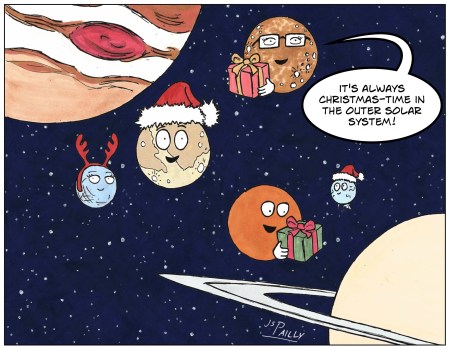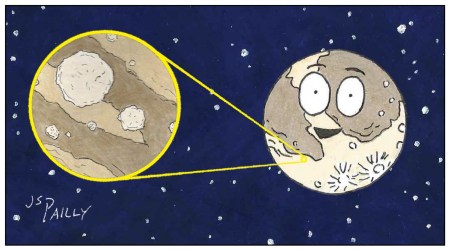Hello, friends! Welcome to Our Place in Space: A to Z! For this year’s A to Z Challenge, I’ll be taking you on a partly imaginative and highly optimistic tour of humanity’s future in outer space. If you don’t know what the A to Z Challenge is, click here to learn more. In today’s post, C is for…
CALLISTO
The major moons of Jupiter are Io, Europa, Ganymede, and Callisto. In science fiction, Europa and Ganymede seem to get the most attention. Sci-Fi writers often end up putting human colonists (or at least a handful of plucky human scientists) on the surfaces of one or both of these icy moons. But today, I’m going to argue that Callisto would be a far more suitable home for future humans.
First off, and most importantly, there’s the issue of radiation. The space around Jupiter is one of the most dangerous radiation environments in the entire Solar System. As you can see in the highly technical diagram below, the radiation is most intense in the vicinity of Io. The radiation levels get better in the vicinity of Europa and continue to taper off when you reach Ganymede. You’re still soaking up a lot of radiation, though! Callisto’s radiation levels, however, are fairly low. You might even describe the radiation levels on Callisto as “survivable.”

Furthermore, planetary protection laws in the future may mean that both Europa and Ganymede are off limits to human settlers. Scientists today are 99.99% sure that Europa has a vast ocean of liquid water beneath her surface, and (as you know) wherever there’s water, there may also be life. There’s evidence suggesting Ganymede may have a subsurface ocean, too. Europa is often said to be the #1 most likely place where we might find alien life here in the Solar System. While the odds of finding life on Ganymede are considerably lower, the possibility of Ganymedean life shouldn’t be ignored.
There are already international agreements in place regarding extraterrestrial life. Space agencies like NASA, the E.S.A., and others are legally obligated to do everything they can to protect suspected alien biospheres from our Earth germs (and also to protect Earth’s biosphere from any germs we might find in outer space). For obvious reasons, these international agreements haven’t exactly been tested in court, and it’s a little unclear how they would be enforced.
But in a future where human civilization is spreading out across the Solar System, I’d imagine bio-contamination laws would become stronger, not weaker. Europa would almost certainly be declared off-limits to humans, unless it is proven beyond a shadow of a doubt that no aliens currently live there. Ganymede may end up being off-limits, too, for the same reason.
Meanwhile, we have Callisto. Scientists who want to study possible biospheres on Europa and Ganymede could set up a research station on Callisto. From there, they could keep a close eye on the other moons of Jupiter. They could operate remote-controlled probes to explore Europa and Ganymede without risking contamination, or they could go on brief excursions to Europa and Ganymede themselves (taking proper safety precautions, of course). While they’re at it, these scientist could also explore Io. Io is the most volcanically active object in the Solar System. There is virtually no chance that we’ll find life there, but studying Io’s volcanoes would still be interesting.
I’d be remiss if I didn’t mention this: Callisto might have liquid water beneath her surface, too. Not as much liquid water as Ganymede, and nowhere near as much as Europa, but still… it’s possible. Which means there’s a slim possibility that there could be life on Callisto. But in Callisto’s case, it is a very slim possibility. Based on what we currently know about Jupiter’s moons, Callisto still seems like the best place for humans to live. The radiation levels are much lower, the risk of bio-contamination is negligible… Yeah, if I were a science fiction writer, I’d put my human colonists on Callisto.
Want to Learn More?
In 2003, NASA published a plan to send astronauts to Callisto, with the intention of using Callisto as a base of operations to explore the other Jovian moons. Click here to read that plan. Some of the information is out of date, of course, but it’s still got some interesting ideas. Maybe someday, something like this plan could work!
I’d also recommend this article on Planetary Protection Policy, covering some of the rules that are already in place to protect planets and moons where we might find alien life.
P.S.: If I were a science fiction writer…? Wait a minute, I am a science fiction writer! Click here if you want to buy my first book. It’s not set on Callisto, unfortunately, but it’s still a fun story.







